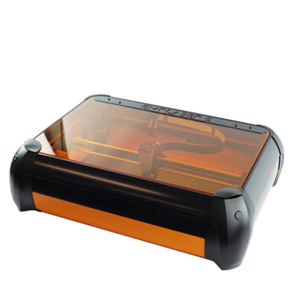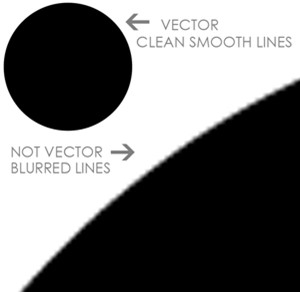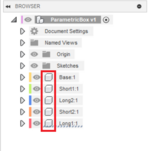Laser Cutting

Laser cutters use high-power laser systems which allow for precise and fast cutting of materials. DBE has 12 laser cutters in total; 2 are technician-operated large format laser cutters, and 10 small-format laser cutters that students can operated once trained.
Prepare your files for laser cutting using the information and guides below.
Equipment Specifications
| Type | Quantity | Dimensions | Materials | Location |
|---|---|---|---|---|
| Trotec SP500 | 1 | 1245 mm x 710 mm | Strawboard (1 and 2mm), plywood (3 and 6mm) | 418 Makerspace |
| Darkly Labs Emblaser 2 | 10 | 500mm x 300mm | Strawboard (1 and 2mm), plywood (3mm) | 418 Makerspace |
| Trotec Speedy 400 Flexx | 1 | 1000 x 610mm | Strawboard, plywood, acrylic, mylar, fabrics, and other materials. | 202 Digital Modelling |
Emblaser 2 This equipment can be operated by students who have completed a laser cutting badge. Students must watch the equipment for the entire process.
Materials
Both the Makerspace and Digital Modelling Workshop stock plywood and strawboard for laser cutting. The Makerspace laser cutters cut supplied materials only, i.e., you cannot bring in your own materials to cut.
The Trotec Speedy 400 Flexx in the Digital Modelling Workshop can cut a wider range of materials, including:
- Cast acrylic
- Wood (thin veneers, plywood, balsa)
- Fabric (natural or acrylic based)
- Leather
- Card and paper
- Polyethylene
- Acetate
And can engrave (but not cut) some others, such as:
- Glass and ceramics
- Solid wood
- Polycarbonate
- PVC (vinyl)
- Anything containing chlorine
- Metals
- MDF
- Any materials without a Safety Data Sheet (SDS/MSDS)
File Preparation

1. Ensure you are using vector files
- Vector files need to be DRAWN in the vector program rather than just imported or pasted in there. Also opening a vector file in a raster file program, such as Photoshop, will convert it to a raster image.
2. Ensure correct use of colours
To process any file, it is required that the PDF only have the following colours:
- Cut = Pure RGB Red (HEX #FF0000 / RGB (255, 0, 0))
- Vector engrave = Pure RGB Green (HEX #00FF00 / RGB (0, 255, 0))
- Raster engrave = RGB Blue (HEX #0000FF / RGB (0, 0, 255))
3. Save as PDF
- PDF format is the only file received in the Makerspace to process any laser cutting job. It is lightweight and avoids the importing of unnecessary information such as CAD. Ensure that you have made your file as a PDF.
4. Use correct naming structure
- StudentID_MaterialThickness_MaterialSize.PDF

Setting up files

Autodesk Fusion 360
Autodesk Fusion 360 combines CAD, CAM, CAE, and PCB into a single, integrated cloud software platform. It includes all the tools that you need to go from design to manufacturing, seamlessly.
Laser Cutting Setup
The golden rule in Fusion is that you make sections of your models as components. This approach involves organising different sections of a model as separate components, each containing essential data such as sketch information, bodies, and origin planes. This concept can be likened to layers in software applications like AutoCAD or Photoshop.
Example of component-based modelling
Let's say you want to laser cut a 3mm Polar ply box with connecting finger joints. Using the inspect menu, you can select "Display Component Colors" to visually seen each component with a distinct colour ID. To prepare the design for laser cutting:
- Selecting the top-level component
- Creating a new sketch
- Draw a rectangle using the create menu or simply hit the [R] key
- Select Center Point rectangle
- Define your size, switching between height and width with [Tab➡] key
- Hit enter and then finish sketch
- Ensure the plane is at the bottom of your model.
- Select Arrange in Modify menu with all the components selected, or select them individually afterward.
- Make sure all components are selected and appear in Arrange options.
- Finally, select envelope on the plane to arrange the objects flat.
-
How to display component colors using the inspect menu.
-
Define your size, switching between height and width with [Tab➡] key

![Define your size, switching between height and width with [Tab➡] key](/images/thumb/8/8a/5._Defining_the_size.png/120px-5._Defining_the_size.png)